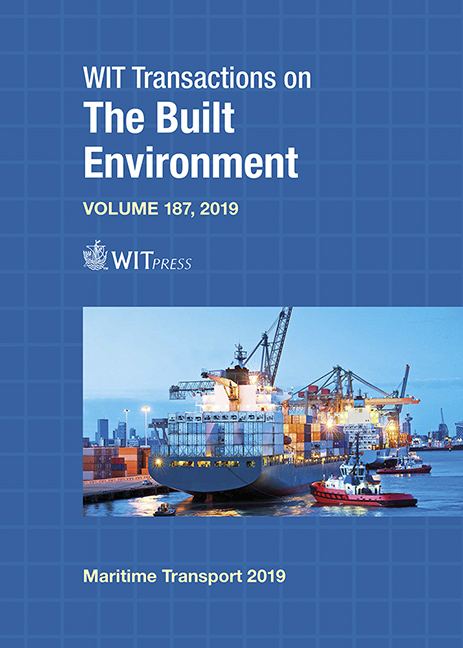INTEGRATED OBSERVING SYSTEMS SUPPORTING CIVITAVECCHIA PORT DEVELOPMENT
Price
Free (open access)
Transaction
Volume
187
Pages
11
Page Range
31 - 41
Published
2019
Size
558 kb
Paper DOI
10.2495/MT190041
Copyright
WIT Press
Author(s)
MARCO MARCELLI, SIMONE BONAMANO, MARCO BOSCHI, CALOGERO BURGIO, VALENTINA CAFARO, GIULIA CAPORALE, GABRIELLA CARUSO, GIORGIO FERSINI, ALICE MADONIA, EMANUELE MANCINI, DANIELE PIAZZOLLA, VIVIANA PIERMATTEI, SERGIO SCANU, GUISEPPE ZAPPALA
Abstract
Industrial and commercial, together with touristic and ecological, are two of the main uses of the Civitavecchia coastal area that bring wealth and of course influence this marine ecosystem. The port, one of the most important in the Mediterranean Sea, recorded in the last three decades a major increment of its commercial traffic, becoming also strategic for important Mediterranean cruise routes and for passenger flow. New passenger facilities and enhanced and enlarged wharfs allowed to increment the hosted cruise liners from 50 ships in 1996 to 500 in 2003. The creation of new quays and the extension of the anti-mural dame caused on the ecosystems a direct and indirect impact due to the modification of the currents and the dispersion of the dredged materials. The characterisation and assessment of the coastal marine environment of Civitavecchia and its surroundings constitutes, since its creation in 2001, is one of the main activities of the Laboratory of Experimental Oceanology and Marine Ecology (LOSEM) of Tuscia University, who studied the impact of anthropic activities and the influence of climatic events, investigating the chemical and physical parameters of both water column and sediments. Benthic biocenoses and
Keywords
observing system, low cost, anthropogenic impact, dredging, sediments, environmental monitoring





